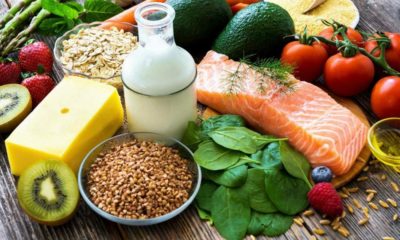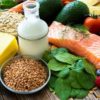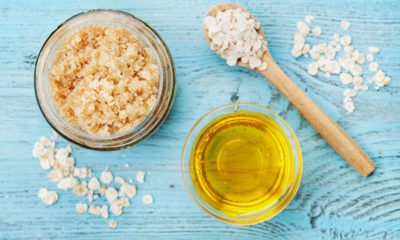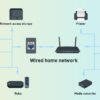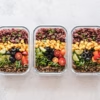Beauty & Wellness
What is Keto Diet? A Complete Beginner’s Ketogenic Diet Guide
Are you looking for the best diet for weight loss? You landed in the perfect place! Now you must be wondering why?
Where everyone says better exercise instead following some crazy diets plan for weight loss, why am I suggesting you to take up Keto Diet?
Keto diet, also known as Ketogenic diet, is the most popular diet right now. A diet which is extremely high in fat, adequate in protein and low in carbs is not only good for weight loss but also offers many health benefits.
Well, before reading this 2000-word keto diet guide, let me tell you a secret. Read the guide in full and by no means miss the ‘take away’ section. That’s the last one, and I’ve got something special for you over there.
Interested enough? Let’s get started.
What is Keto Diet?
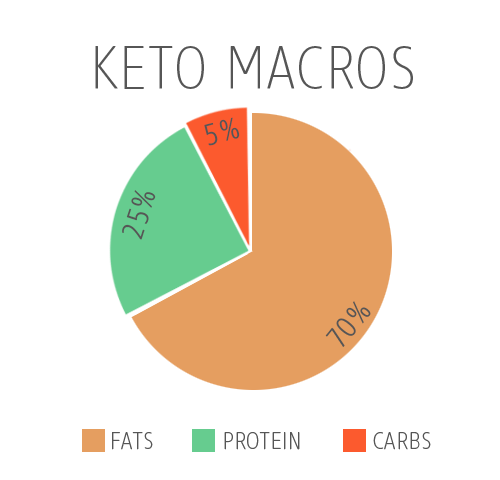
A keto diet is a low carb diet where we reduce our carbohydrates intake to such extent that our body starts using the fats as primary energy source.
In a more straightforward way, when you consume carbs, your body breaks it down into glucose and insulin. Glucose is the first and preferable fuel choice for your body to perform daily functioning. Since the body utilizes glucose as an energy source, your fats keep on stocking up in the body.
Lowering the carb intake puts the body into a natural metabolic state called ketosis. When this happens, the liver starts producing ketone bodies out of the stored fat and use them as a source of energy instead of carbs. This way, the body becomes more efficient at burning body fat fast.
The human body is remarkably adaptive to what we put into it. According to a research, our body produces ketones all the time, but the number depends on protein and carbohydrates consumption.
The ultimate goal of a ketogenic diet for weight loss is to put your body into ketosis. This metabolic state is achieved through starvation of carbohydrates instead of starvation of calories.
What is Ketone?
Ketones are the compounds created by your liver when the body experiences low carbohydrate intake. The human brain is a hungry organ which needs lots of energy every day to function ceaselessly. It can’t use fats as a primary energy source directly, therefore, run on glucose and ketones.
A large part of the human brain uses ketones as fuel for mental functioning while on a ketogenic diet plan. Cut carbs and protein into your diet and include recommended amount of ketogenesis idles; doing this push you to half throttle. Generally, fostering a ketosis takes about three days.
What is Ketosis – How to Get Into Ketosis?
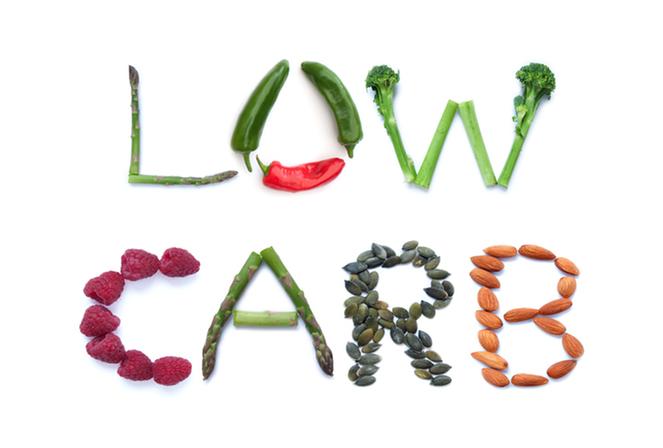
When on a keto diet, the entire body adjusts according to changed energy sources. The ketogenic diet is not something you choose to go on impulsively, and one-day decides to go off whimsically. The process of getting into ketosis state takes from 2-7 days, depending on the food you are eating, physical activity levels, and on your body type.
The fastest way to obtain ketosis is to curb your carb intake to 20g or less, exercise on an empty stomach and keep an eye on water consumption. Getting into ketosis is pretty straightforward, lets put it according to the level of importance.
1.Restrict Carb & Protein Intake
The most common mistake most people do is they tend to focus only on restricting net carbohydrate consumption while forgetting about protein. Too much protein intake can lead to lower ketosis levels. If you want to see desired results, restrict both. The reasonable bifurcation for standard keto diet is 20% or fewer carbs, 20% protein, and 60% fats.
2. Start Loving Fats
When the body enters into ketosis metabolic state, your body becomes fat burning machine being fats the primary source of energy. So make sure you are feeding your body enough of the fats in order to keep it functioning properly. In a ketogenic diet, you do not lose weight through starvation.
3. Calorie Deficit Still Counts
Despite fat is an important part of your keto diet plan, calories are still important, and one needs to be vigilant on the calorie deficit to lose weight. To make it watchful, you can use the keto calculator to calculate how much proteins, carbs, and fats you should be eating in a day.
4. Drink Plenty of Water
Ketone being diuretic tends to make you go washroom now and then. Hence, drinking water not only keeps the body hydrated but also regulate body’s functioning and controls hunger level.
5. Don’t Forget the Workout
If you want to make most out of keto diet plan for weight loss, make exercise your alliance. Just add few easy exercises to lose weight, and the best part is, you don’t have to join a gym for that.
6. Start Fat Fasting
This is probably the best way to inducing yourself into ketosis faster. It boosts ketone production consistently throughout the day. Fat fasting can be done in so many different ways according to the requirement of the body. To know more about fat fasting, read here.
Measuring Ketone Levels – How to Know if You are in Ketosis?
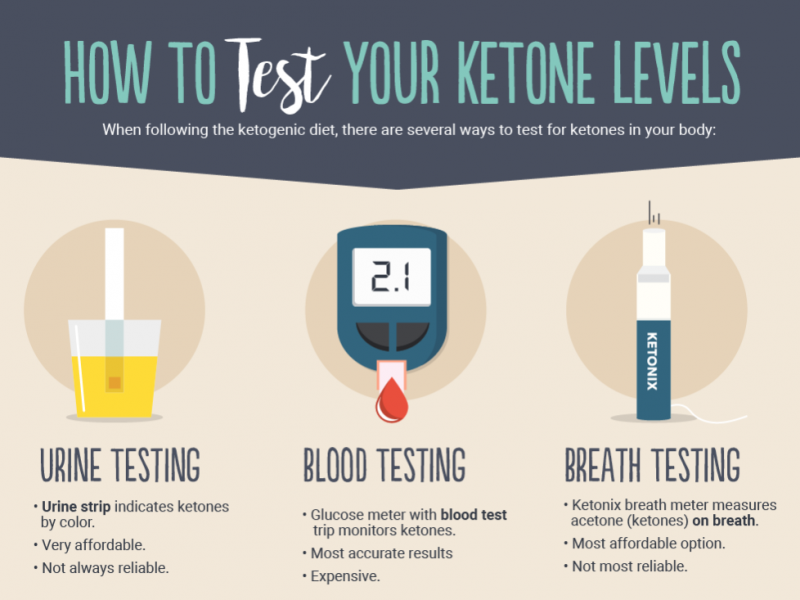
Image Source: Perfect Keto
Now when everything is done right until now, the question arises ‘how to know if you are in ketosis?’ When ketones are being produced, they are spilled in different parts of your body. There are few prominent tests which are available to check whether you are in ketosis or not. However, you can identify this from physical symptoms. These physical symptoms let you know if you are on the right track. Such as increased urination tendency(as I mentioned above ketones are naturally diuretic), dehydrated mouth, bad breath and suppressed appetite.
However, these symptoms aren’t usually 100% accurate. Hence, you can take help of these methods to check your ketone levels:
1.Breath meter
– The breath meter measures acetones through breath.
– Affordable.
– Not accurate.
2. Measure with a urine strip
– Indicates ketone level by strip’s color.
– Affordable.
– Not always a reliable option.
3. Measure with a glucose meter
– A type of blood test strip monitors ketones.
– Expensive method.
– Most accurate among all.
For more accurate assessment, monitor ketone levels using any of the above methods on a weekly basis.
Types of Keto Diet
When someone talks about ketogenic diet plan, mostly it is thought of as a low carb and high dietary fat diet. However, there are several ways to achieve ketosis depending on your body type and circumstances. The figures which I am going to talk about here are just to give you a brief about types of a keto diet. Hence, it is advisable to consult with your dietitian before implementing keto diet plan for weight loss.
Here are 4 types of ketogenic diets, read on to know which one is right for you.
1.Standard Ketogenic Diet Plan (SKD)
The standard keto meal plan is the most common and highly researched type of ketogenic diet. This diet plan is low in carbs, moderate proteins and, high dietary fats. Thus, the SKD diet ratio can be structured as 5-10% carbs, 20% protein, and 70-75% fat. In terms of daily consumption according to this ratio, the diet would include 20-50g of carbs, 50-60g of protein, and no defined limit for fats. Remember, too much protein’s intake can kick you out of the ketosis.
This sort of ketogenic diet plan targets people who have a sedentary lifestyle and don’t work out much. Hence, this type of ketogenic diet wouldn’t be recommended to anyone who is into any sort of intense physical activity.
2. Targeted Ketogenic Diet Plan (TKD)
As the name explains, this particular diet plan allows adding few extra carbs to your diet overruling the SKD’s 5-10% carbs limit. TKD target those people who are extraordinarily active and weight train themselves twice or thrice a week. This happens because if you never ingest carbs in your diet, the low glycogen levels make the intensive workouts a bit difficult.
3. Cyclical Ketogenic Diet Plan (CKD)
This particular diet is undoubtedly my favorite among all diet plans. CKD is an attractive diet plan for those who love cheat days. This is a flexible diet which rotates between 5 ketogenic diet days and 2 high carb diet days. This sort of diet rotation can maximize fat loss while building muscle. The flexibility of the diet makes it easy to follow as you can satiate your carb hunger in those 2 days.
Keto Diet Foods – What to Eat on A Ketogenic Diet?
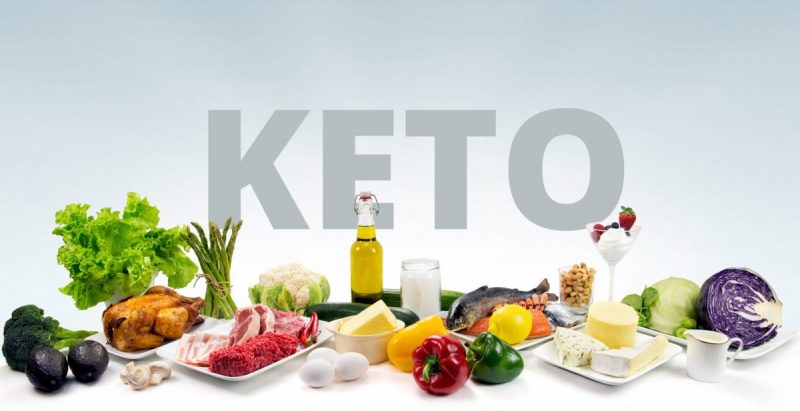
If you have made it till here then probably you understand that the most important thing is to cut down most carbohydrates. The end goal is to train your body to burn fat for fuel instead of carbs. The fewer the carbs, faster the weight loss. You need to entirely remove sugar, fruits, and starchy food such as potatoes, wheat, rice, and pasta.
So now, let’s talk about what to eat and what not to eat on a keto diet.
Do Eat
1.Fat
- Butter, coconut oil, olive oil, ghee, etc. These are saturated fats and essential for a healthy immune system.
- Mayonaise, cream cheese, guacamole, and almond oil.
- Polyunsaturated omega-3s and monosaturated fats.
2. Protein
- Prefer meat from organic and grass-fed or pasture raise animals whenever possible.
- Wild caught seafood.
- Organic Eggs.
3. Carbohydrates
- Lower carb veggies such as spinach, lettuce, avocado, zucchini, broccoli, cabbage, eggplant, olives, cucumber, cauliflower, green beans, and kale.
- Choose full-fat dairy products as it fills up stomach quickly and more nutritious.
4. Nuts and Seeds
- Especially macadamia, pecan, and brazil nuts have fewer carbs than almonds, cashews, and pistachios.
- Most of the nuts are calorie dense, hence, check out the carbs and calorie count before munching on them.
- Flax seeds and sunflower seeds being low in carbs does the job wonderfully.
5. Drinks
- Unsweetened lemonade, tea, coffee, wine, sparkling water, etc. Try not to add sugar and milk to your tea or coffee.
Do Not Eat – I Repeat, Do Not Eat Them!
1.Fats
- Any sort of refined fats which have been processed at a high temperature like corn oil, sunflower oil, canola, soybean, and grapeseed oil.
- Trans fats: Cakes (especially with frosting), donuts, pies, biscuits, margarine, cream-filled candies, fried fast food, and spreads should be avoided completely. These trans fats contribute to weight gain and increase health risks.
2. Protein
- Any sort of preserved animal product or seafood.
- The processed sausages and hot dogs.
3. Carbohydrates
- Avoid refined carbs such as pasta, bread, cereal, corn, rice, etc.
- Fruits that have high sugar levels like berries, strawberry, apple, banana, oranges, etc. However, avocado, start fruit and blackberries can be consumed in moderation.
- Starchy high carb vegetable such as carrots, beetroot, potatoes, peas, sweet potato, and onion.
4. Drink
- Keto meal plan removes smoothies, soy milk, energy drinks, orange juice, vitamin water, milkshake, frappe, milk, soft drinks, and beer from your diet. Pouring even a glass of these drinks in your stomach can kick you out of the ketosis. You have been warned!!
Benefits of Keto Diet – Keto Diet Results

1. Weight loss
This is first, and foremost benefit of ketogenic diet wherein low carb diet kills your appetite in a good way. It reduces the hunger and tendency to munch now and then, eventually resulting in weight loss.
2. Blood Pressure and Cholesterol Go Down
Elevated cholesterol level and blood pressure invite many life-threatening diseases including heart disease, stroke, kidney failure and many others. A low carb keto diet improves insulin resistance, which helps lowering down the blood pressure and reduces associated health risks.
3. Helps with Brain Disorders
Keto diet not only affects you physically but it is also considered as a great alternative to treat brain disorders. Studies have shown a significant improvement in epileptic children by following the ketogenic diet plan. A brain needs glucose, that is true. But a larger part of the human brain can also burn ketones stimulating areas that were burning glucose.
This technique is largely used to cure epilepsy in children who don’t respond well to drug treatment.
4. Controls Blood Sugar Levels
Low carb ketogenic diet restricts the sugar intake and changing the amount of sugar in a human body affects insulin levels. Insulin is a hormone produced by the body to respond the elevated toxic blood sugar levels. Hence, if you are cutting out the carbs from your diet, you remove the need for insulin, that’s when both blood sugar and insulin levels go way down.
5. Low Carb Diet is Great Way to Suppress Appetite
Ketogenic diet plans are high in fat, hence, works as a great appetite suppressant, thus more weight loss.
6. Improves Energy Levels
Sounds shocking? Once someone successfully enters into ketosis, ketones produced from fat becomes the primary source of energy. When your body is fat adapted, you feel full for longer without eating food and without falling short on energy.
Side-Effects of Keto Diet Plan
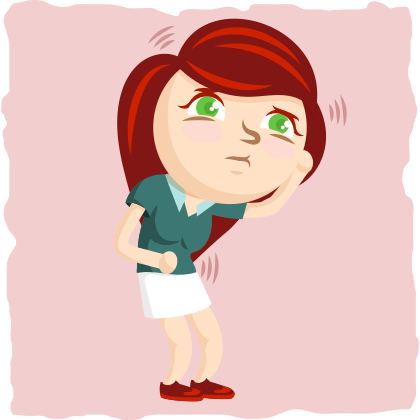
Image Source: Ruled Me
Until now, we have talked about what good keto diet does to your body. It is considered safe for most of the people. But that being said, it is also important to discuss the possible side-effects one can expect or face while on the ketogenic diet. However, not everyone experiences the side effects of keto diet plan; it varies with the individuals.
1. Low Blood Sugar
In initial days, our body resists changes happening inside. People who used to consume a lot of carbs and sugar now suddenly cut down the intake. Due to this, there are possibilities that you may feel tired easily, hungry and drained. But this effect is periodical until your body adjusts to changes.
2. Keto-Flu
In the first week of the keto diet, there is a common side effect which is faced by most of the people is known as “keto flu.” It is also referred as ”low carb flu” because of it resembles the symptoms of regular flu. You may experience a headache, nausea, deteriorating energy levels, increased hunger, poor sleep, cramps, and lethargy.
The keto-flu usually goes away after the first transition week. However, this state also discourages people from continuing the ketogenic diet plan.
3. Bad Breath
Some people experience this issue when they are on keto diet meal plan. The reason behind this issue is acetone. This is a type of a ketone body created during the ketosis process. Acetone smells like nail paint remover and has a fruity citric smell. But that’s a good sign, right? That’s how you know you are into ketosis and now your body is a fat burning machine.
This side effect also disappears in few days, but if stays for longer, then you can take help of mouthwashes and don’t forget to keep yourself hydrated.
4. Increased Urinating Tendency
Ketones are natural diuretic also, the body and kidney release lot of water during the process because of insulin drop.
5. Elevated Heart Rate
Also known as heart palpitations, can happen in the initial days of the diet plan. Racing heart rate usually happens because of dehydration and reduced salt intake.
6. Constipation
This is another common ketosis side effect occurs as your digestive system adapts to changes. Constipation often caused in a dehydrated body as most of the body fluid flushed out due to increased urination.
Take Away
I told you in the beginning that it is going to be worth reading. Keto diet plans certainly have shown people some tremendous results and have a massive impact on your health like weight loss, controlled blood sugar, raise the energy and mood levels. Surely, a ketogenic meal is hard to adapt in the beginning, but it will be worth taking and witnessing the transformation you have been through.
If you are sure that you want to start the keto diet, my advice to you will keep it strict and controlled. Don’t forget to track what you eat and keep yourself hydrated. Happy Dieting!













